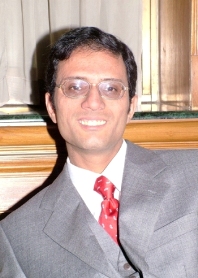Dear Colleagues,
Kindly see the following:
=======
CALL FOR PAPERS
The Yale Journal of Criticism welcomes articles for a projected
volume on the theory and practice of translation. This issue is
open to all fields, periods, genres, and media, and encourages
submissions of an interdisciplinary nature.
We invite contributors to explore the following questions, which aim
... See more Dear Colleagues,
Kindly see the following:
=======
CALL FOR PAPERS
The Yale Journal of Criticism welcomes articles for a projected
volume on the theory and practice of translation. This issue is
open to all fields, periods, genres, and media, and encourages
submissions of an interdisciplinary nature.
We invite contributors to explore the following questions, which aim
to initiate a conversation about translation that will be provocatively
broad in both historical and methodological terms:
(1) How has the question of translation assumed a central position
in some of major linguistic and cultural developments of the past,
including the emergence of the vernacular in the Latin Middle Ages;
the transition from manuscript to print culture in the Renaissance;
and, more recently, the ascendancy of electronic texts and the
globalization of literary culture? How has translation figured in the
sociopolitical upheaval that has accompanied historical change,
particularly with regard to issues of gender, ethnicity, sexuality,
and power?
(2) Given the increased globalization of literary and cultural studies,
what new theories of translation will arise in conjunction with the
pressing need to render texts into the various languages of the
\"global village\"? How will the social and political developments that
accompany the internalization of literary and cultural studies affect
our understanding of translation? For example, how might the
literary geopolitics and ideological issues inherent in post-
colonialism influence the work of translation?
(3) What formal and thematic challenges do certain genres and
media pose to the translator, and how do these challenges affect
the reception of these cultural productions? How is translation
among languages similar to (or different from) translation among
media--for example, a sculpture that responds to a poem, a
symphony that responds to a painting, the illustration of literary
texts, the adaptation of text into film, or even the addition of
subtitles to film?
(4) How will developments in technology -- for example, computer
programs for translation and the increased circulation of hypertext
and electronic texts -- shape the future of translation?
(5) What cultural and formal elements constitute what Benjamin
termed a work\'s \"translatability\"? How might differences in media,
culture, politics, genre, and language conspire to make a text or
image \"translatable\" or \"untranslatable\"?
Please submit manuscripts in duplicate by July 31, 2002 to:
YALE JOURNAL OF CRITICISM: TRANSLATION ISSUE
P. O. Box 208298
New Haven, CT 06520-8298
For Guidelines on how to submit, please see:
http://muse.jhu.edu/journals/yale/information/guidelines.html
=========
Best wishes to everyone.
[addsig] ▲ Collapse
| | |




